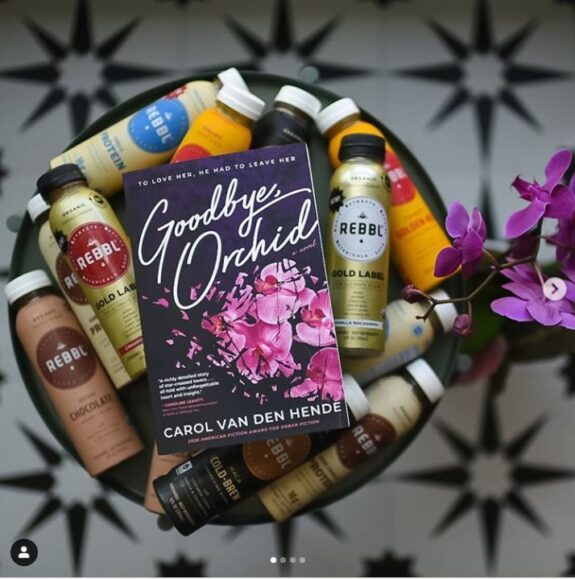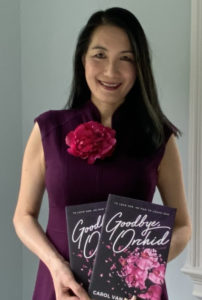Disclaimer: DIY MFA does not provide legal, tax accounting, or financial advice. In making decisions regarding whether and when to use brand names in fiction or other decisions that may have legal and/or financial ramifications, we strongly urge you to speak to a licensed IP attorney for the most accurate information.
As an author, it can be tempting to use real brand names in our fiction. Well-known products create a shortcut to connect with readers because they’re tapping into long-established memory structures. For instance, mention “Slurpee,” and I’m instantly transported to a pickup truck ride to a 7-11 convenience store in the heat of summer. Dress a character in Stella McCartney and the reader may get a sense that that person values luxury and sustainability.
You might wonder, is it okay to use branded product names? I’m pleased that this article shares my own experience and provides guidance from US-based trademark and Intellectual Property (IP) attorney, Deborah Mortimer.
My Goodbye, Orchid series features advertising agency founder Phoenix Walker and beauty industry executive Orchid Paige. These are worlds that I know well from years of partnering with agencies to run brands as a professional marketer.
In the story, my two characters work together on advertising campaigns. Although they could’ve discussed advertising work on a fictional brand, it added believability to have them converse about a real brand.
The ideal scenario would be to find a contemporary brand that Phoenix would be excited for his agency to win. As I wrote, I decided that REBBL® Elixirs, a beverage brand that’s at the forefront of sustainability and wellness, would be a perfect fit for my characters who value the environment and health.
I drafted the scenes using REBBL® Brand. Then, through a personal connection, I was able to contact the company. Following several conversations with the marketing team, the company confirmed that they were amenable to my request to include their brand in my debut novel, Goodbye, Orchid.
During the discussions, I shared all of the prose that included REBBL® Elixirs. My respect for the product came through in the scenes, as the mentions were positive and consistent with the brand. The company approved the brand use in the novel.
Before I launched my second novel, Orchid Blooming, I reached out to share an Advanced Reader Copy. Again, the company approved the brand use. The only change they requested was to let me know that they had updated the REBBL acronym to “Roots Extracts Berries Botanicals Love.”
Not only was the change of the last letter from “Leaves” to “Love” an easy edit, it gave me an idea to add more tension. Here’s the brand mentioned in a scene when the main characters are trying to ignore the chemistry between them and keep their relationship purely professional:
[Phoenix] grinned. An idea struck him. “You’d be a great consultant on the business we want to win.”
“Oh, yeah?” [Orchid] chewed and swallowed.
“It’s a beverage made with roots, extracts, berries, and botanicals.”
“REBBL,” she named the elixir brand. “Plus love. The l is for love.” She lifted a hand to her neck, like the last word had taken her by surprise.
“You’re exactly right,” he said.
In addition, the company and I agreed to include a statement on the copyright page of both Goodbye, Orchid and Orchid Blooming. Here’s the line:
REBBL® Elixirs is a trademark of REBBL Inc. and used with permission of the company.
On the copyright page, the brand name is printed in all caps, with the registered trademark symbol ®, followed by the generic descriptor of the category. I was familiar and comfortable with this practice, from the many brands that I’ve led during my marketing career.
They even supported the release by shipping cases of REBBL® Elixirs to Bookstagrammers, who loved the extra touch and included the product in some of their photos, example image here:

Clearly, not all authors will have access to the brands they want to include. So, let’s hear from Principal Attorney Deborah why companies protect their Intellectual Property so fiercely, and the do’s and don’ts when considering the use of brand names in your fiction.
Legal Consideration When Using Brand Names in Fiction
Carol’s experience perfectly demonstrates some considerations that must be made when deciding to use brand names in fiction writing. As registered trademark holders, companies are obligated to ensure that their trademarks’ integrity and value are maintained. Infringement isn’t the only concern. The fear of a trademark being tarnished or, worse, genericized is what motivates companies to police the artistic use of their brands, especially in films and literature.
What is a Genericized Trademark?
When a brand name is so widely recognized that it becomes a common term in society, it is known as a genericized trademark. Essentially, the brand name becomes interchangeable with the name of the product itself. VASELINE, Q-TIP, BAND-AID, and KLEENEX are all examples of brand names that have become synonymous with the products themselves. For example, it’s more common that someone would ask for Vaseline than say, “I need petroleum jelly,”—even if they’re not asking for the specific brand.
This phenomenon of genericized trademarks can be both a blessing and a curse for companies. On the one hand, it means that their brand has become so recognizable that it is essentially a household name. On the other hand, it can make it difficult for companies to protect their trademark and prevent others from using their brand name to sell a similar product.
Some other examples of genericized trademarks include XEROX for photocopying, FRISBEE for flying discs, and ZIPPER for a type of fastener.
Why Is This Important?
Overall, while having a brand name become a generic term may seem like a measure of success, it’s important for companies to strike a balance between brand recognition and trademark protection. To maintain their trademarks, they must be vigilant and monitor their usage.
Writers who improperly use brand names, which can lead to genericizing a brand, are vulnerable to lawsuits by big-name companies looking to maintain the strength of their brand.
So how does a writer avoid this trademark pitfall? It’s simple: Just use the generic term for a brand in your writing.
Here are some common examples:
Brand name
Kleenex
Taser
Jeep
Generic term
“facial tissue”
“stun gun”
“search engine”
“sports utility vehicle”
How is a Trademark Tarnished?
A trademark is tarnished when it is used in a way that creates a negative association with the brand in the consumer’s mind. This can negatively impact the brand and trademark holder’s business and reputation. A writer can tarnish a trademark in several ways, including:
- Making disparaging references to the brand, like having a character complain about the quality of a brand.
- Associating the brand with incorrect or vulgar products, like associating a popular brand of sneakers with racy lingerie.
- Stating the use of a brand in an unintended or vulgar way, like having a character use a particular brand of cough syrup to get intoxicated.
Guidelines to Consider When Using Registered Trademarks in Writing
1. Regarding trademarks and service marks, using them as proper adjectives rather than nouns or verbs is essential.
They should always describe a generic noun that defines the product or service. For example, don’t say, “I Xeroxed the document,” but instead, say, “I made a photocopy of the document using a Xerox machine.”
Keep in mind that a trademark is a company’s brand name associated with the product or service, not the actual product or service. To properly use marks, they should not be pluralized or used in the possessive form unless the trademark itself is plural or possessive.
2. Always correctly use the trademarked name.
This means consistently using the appropriate capitalization and symbol (such as ® or ™) where necessary or adding the word “brand” after its use.
Additionally, a trademarked brand should be distinguished from its generic identifier by setting it apart in bold, italics, or a different font.
3. Always strike a neutral or positive tone when referencing a brand.
You should avoid negative or vulgar references. Or you should refrain from referencing the brand altogether, using the generic descriptor instead.
4. Always correctly associate the trademarked brand with the products/services it is registered for and its intended use.
When in doubt, use the United States Patent and Trademark Office (USPTO.gov) website as a reference to look up registered trademarks and the products/services they are registered for.
Additionally, the USPTO can be used to locate the owner of a registered trademark. Some companies list their particular guidelines for use on their website or who to contact to seek permission for use in literary work.
5. Be aware of the industry or market in which the trademarked name is used.
Some industries may have very particular standards for how a trademarked name can be used in artistic work.
If you are unsure how to use a brand names in fiction, consult a legal professional to ensure you are using it correctly and not infringing on any rights.

Carol Van Den Hende is the award-winning author of the Goodbye, Orchid series. She’s also a speaker, global marketer, digital strategist, Climate Reality Leader and Board Trustee. One secret to her good fortune? Her humorous husband and twins, who prove that love really does conquer all.
You can find her on her website or follow her on Twitter, and Facebook. Please sign up for Carol’s newsletter at https://carolvandenhende.com/contact or linktr.ee/cvdh

Deborah C. Mortimer is the Principal Attorney at Mortimer Legal, PLLC, a NY-based boutique intellectual property law firm focused on protecting the brands, ideas, and creative portfolios of entrepreneurs, businesses, authors, illustrators, and other creatives.
Visit trademarkyourassets.com or deborahcmortimer.com to learn more. Mortimer Legal PLLC services clients nationwide.







